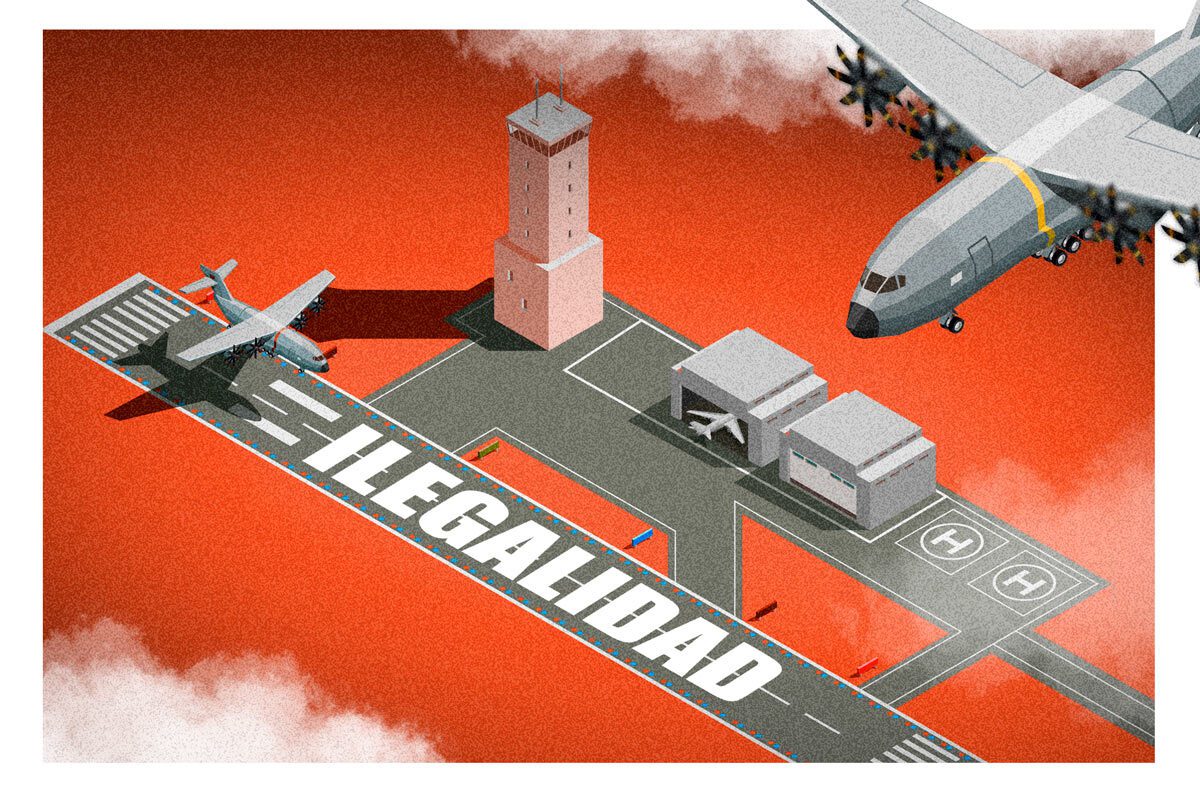The project for the reconstruction, expansion and improvement of the Punta Huete international airport, located 58 kilometers northeast of Managua, was announced by the authorities of the Sandinista regime as a “fundamental pillar to promote communication, exchange, tourism and trade between Nicaragua and the world”.
However, what the Ortega-Murillo dictatorship didn’t say is that the work was illegally awarded and the reasoning for its construction, so far, is not convincing.
The Sandinista regime, through a press release, informed that the company in charge of the construction will be CAMC Engineering Co., Ltd, a Chinese company with a history of corruption in Bolivia, Ecuador and Venezuela.
The official press release does not explain other details of the agreement, such as the total amount of the project, the deadline for the construction, and why the project was awarded directly to CAMC Engineering Co., Ltd.
Recibe nuestro boletín semanal
A Global Times story revealed that the agreement states that the airport development is estimated at 3590 million yuan (US$491 million), over 48 months, once the financing is settled.
“The assignment of the project to this company is illegal, because the Government should have made an international bidding process, as this is a concessional loan. Although the Chinese company is providing the money, this financing is going to be paid with public money”, explained an expert in public policies and development consulted by DIVERGENTES.
Airport details hidden by the regime
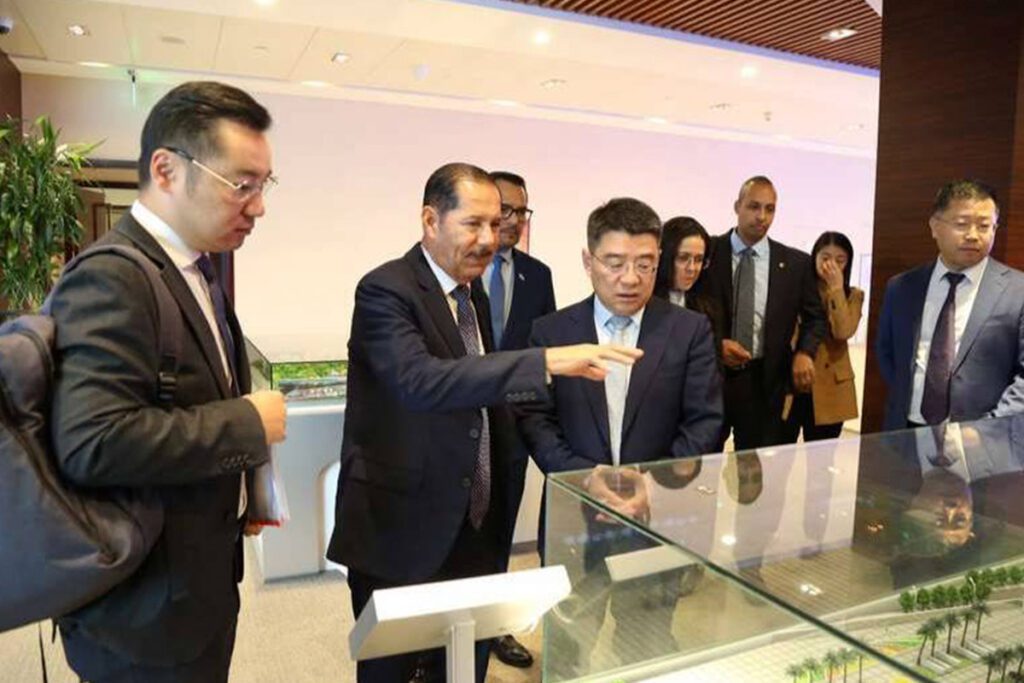
Since the details of the agreements signed between the Chinese state-owned company and the Ortega-Murillo regime are unknown, the airport construction project would have to be developed under the principles of Law 323, the State Contracting Law.
In article three of this law, it states that if there is no information and the procedures to be followed for any project are not established, these will be governed by the requirements and procedures contemplated in said legal decree and its regulations.
The expert pointed out that, according to article five of the State Contracting Law, the Government is “obliged to plan, program, organize, develop and supervise the contracting activities so that its needs are satisfied in a timely manner and in the best conditions of cost and quality; likewise, article six orders that the selection of the contractor must always be made through an open bidding process.
“If it were a Chinese investment, maybe the company would have granted the service for a certain period of time. It would not be possible to intervene in any bidding, because they are providing the money in exchange for management. But in this case, what exists is a financing that has to be paid and this will be definitely done with public money”, said the expert.
The only way, according to this specialist, that the Sandinista regime has shielded itself from falling into illegality, is that the content of the signed agreements were decided with the company that was going to develop the airport. “But so far that doesn’t exist,” she insisted.
The airport is part of a set of Chinese promises
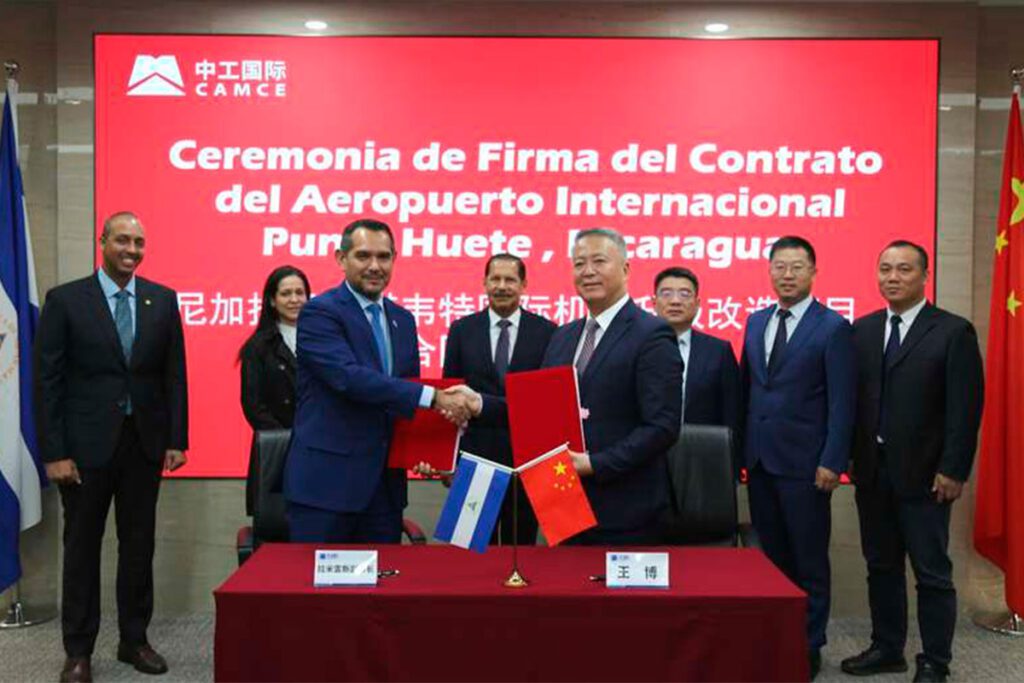
According to the official communication, the agreement for the reconstruction of Punta Huete airport is only one of the eight contracts signed with Chinese state companies.
Among the other projects are the study, design and construction of the Managua-Masaya-Granada railroad and the formulation of the Managua-Corinto-Bluefields Railroad master plan; another agreement for the road projects for the expansion of the Guanacaste-Nandaime-Rivas highway and the expansion of the Rivas-Sapoá highway.
An agreement was also signed for the Coastal Highway Phase II project. Likewise, the development of the Mojolka Hydroelectric Plant (with a capacity of 123 megawatts of energy) and Tumarín (253 megawatts). In addition to the acquisition of 500 buses for public transportation in 2023 and 2000 additional buses in 2024.
The agreements were signed between October 17 and 18, 2023, in the context of the tenth anniversary of the Silk Road and Belt Initiative, promoted by the People’s Republic of China on a global scale.



(1) Lieutenant Colonel Onofre Guevara shows what was to be the control tower of the Panchito Airport. (2) Aerial shot of the runway of the Panchito Airport. (3) The runway is the airport’s traveled by horses. Archive photos published by La Prensa Magazine.
Subsequently, they were presented on Monday October 23 on national television by the son of the dictatorial family and business manager, Laureno Ortega Murillo, who was joined by the Minister of Transportation and Infrastructure, Óscar Mojica; the president of the Nicaraguan Electricity Company, Ernesto Martínez Tiffer; Foreign Minister Denis Moncada and Amaru Ramírez, director of Managua’s Municipal Transportation Regulatory Institute.
According to a report by the newspaper La Prensa, the construction of the Punta Huete airport began in the 1980s, after a first document of military aid from the Soviet Union to the Sandinista revolution included at least a squadron of 12 units of MIG-21 fighter planes.
“It wasn’t long before President Ronald Reagan’s administration warned that if the MiGs arrived in Nicaragua, the U.S. would destroy them on the runway of the new airport itself. The MiGs never arrived. The airport was never completed,” states the report.
Punta Huete will be a mega airport, according to the regime
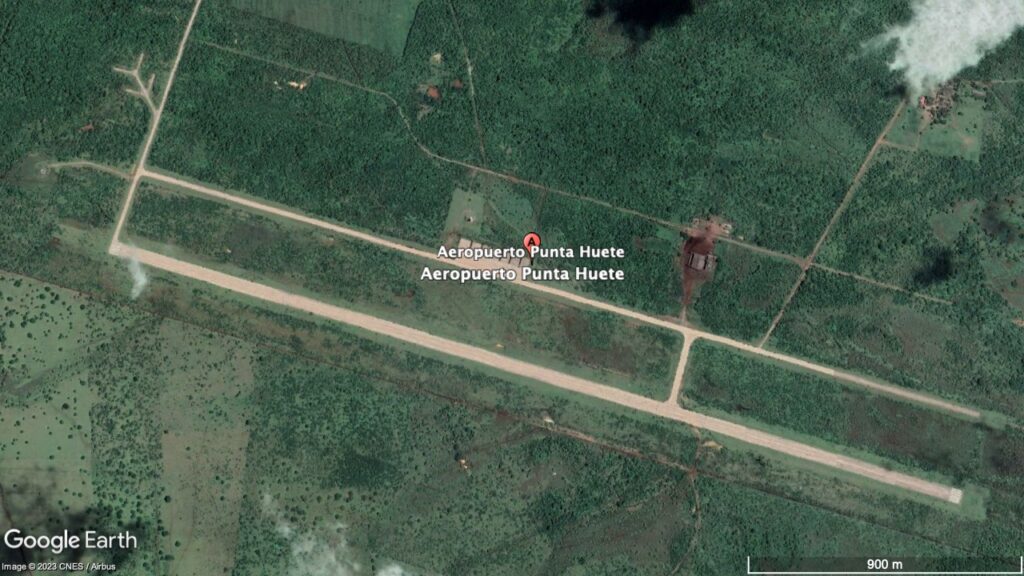
It was not until the end of October 2023, that the name of Punta Huete was again heard in the media and social media. The official information details that the former military base is conceived as a 4F international airport, which would imply that it will supposedly have a runway of more than 1,800 meters, for aircrafts with a wingspan of 65 to 80 meters. This means that it will be able to accommodate larger planes, with no weight and balance restrictions.
With its reconstruction, expansion and improvement, it will have the capacity to serve up to 3.5 million passengers annually, who will be able to arrive in the country in larger planes.
It will also reduce the number of air connections between Nicaragua, Asia, Europe, Africa and Oceania, “turning our country into an attractive destination for tourists from these continents”, according to official information from the Ortega-Murillo dictatorship’s propaganda.
However, the announcement caused a great stir among the Sandinista bases. A source linked to Empresa Administradora de Aeropuertos Internacionales (EAAI), pointed out to DIVERGENTES that the decision to approve the agreement for the construction of the mega-work, so far, has been based on unconvincing arguments.
“It has not been explained what alternatives were evaluated to decide what type of airport was the most suitable to build. Nor has it been indicated whether the construction site (at Punta Huete) is the most suitable, and what were the parameters used to define the type of category. Much less has been said about the number of aircrafts that will land in the country”, detailed the consulted source.
Regime projects a flow of more than three million passengers
One of the regime’s arguments for approving the construction of the new airport is that Managua’s international airport has a great demand of passengers, and that the future airport will meet the demand of this supposedly growing flow of people.
“In the first phase we could receive up to 3.5 million passengers, 2,000 flights per year, (we will have) a runway 3600 meters long and 75 meters wide. These are huge airplanes that will safely land,” the MTI minister said during an interview on TN8.
For the source linked to the airport sector, any construction of a new airport has to do with passenger demand.
“If you have a capacity that overflows or is close to 80%, then you do need one. But at the same time, you need a twenty or thirty-year projection of how your demand will be. It is basically to evaluate the market, nearby airports, the type of service that exists and what type of demand is not met”, explained the source, who said that in the country we are not even close to reaching capacity.
According to the macroeconomic statistics report of the Central Bank of Nicaragua, during 2022, 634,807 passengers disembarked in the country, that is, not even half of the number that the regime intends to receive when the new Punta Huete airport is built.
“Where are those 3.5 million passengers that they estimate they will be able to serve in the country when they have Punta Huete going to come from? There is no way because tourism is not picking up, and the political situation of the country does not give confidence to investors and foreigners in general”, explained the source.
Passenger figures inflated by the migratory trampoline
By 2023, the regime aims to welcome almost 2 million passengers. Its figures are based on an increase in the number of flights and passengers. At present, according to Iván Escobar, general director of Nicaragua’s international airport, the airport receives between 42 and 46 operations each day, representing, supposedly, 170,000 passengers each month.
On this point, the consulted source explained that the regime’s data are not accurate and that this figure is inflated with the number of African, Cuban and Venezuelan migrants who use Nicaragua as a trampoline to reach the United States.
Another of the regime’s justifications for building this mega airport has to do with the fact that Managua’s international airport, Augusto C. Sandino, is limited in its capacity for renovation, and no longer meets the necessary requirements for expansion.
Populist projects put the brakes on Managua’s airport expansion
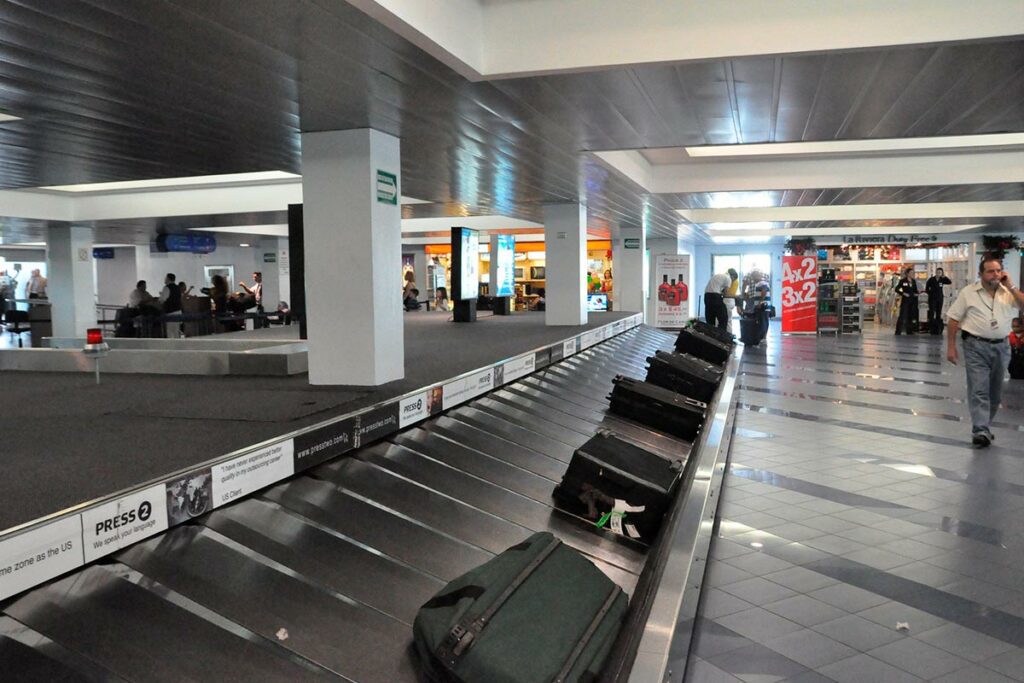
According to the EAAI source, while it is true that the current airport cannot expand where it is currently located, this is not because of a recent problem, but because of the amount of land that the Ortega regime allocated for residential construction around the airport grounds.
“They let everything around it be populated. Areas that were uninhabited not long ago, we are talking about less than ten years. They encouraged the population to settle there in the surrounding areas. So that disrupts, let’s say, the future projection and that is why they talk about the need for a bigger runway, which cannot be achieved with the current dimensions,” the source said.
Regarding the demand of needing a larger space to receive Airbus A380 and Boeing 747 and 748 aircrafts, the source pointed out that it is a little strange that this is being considered, when they are aircrafts that only arrive in Latin America to Panama, Mexico City and Argentina, and only a few times a month.
“So far we do not have that demand to receive this type of aircraft. Unless they are thinking of monopolizing all Chinese tourism. Although many Chinese travel to Peru and that country does not have an airport of the type they want to build here,” said the source.
The expert in public policies and development consulted by DIVERGENTES said that the questionings made to the mega work are not a political attack, but a criticism to the weak arguments used by the regime to decide to build a mega airport that although it would bring a great advantage, if it is not properly managed due to a lack of planning, we would be at the gates of a super white elephant.
“Given the lack of information, speculations are made. If the project were more clear, maybe we would question other things or maybe nothing, but there is no solid reasoning for this work. Clearly, we are doing something too big for our needs,” he added.

